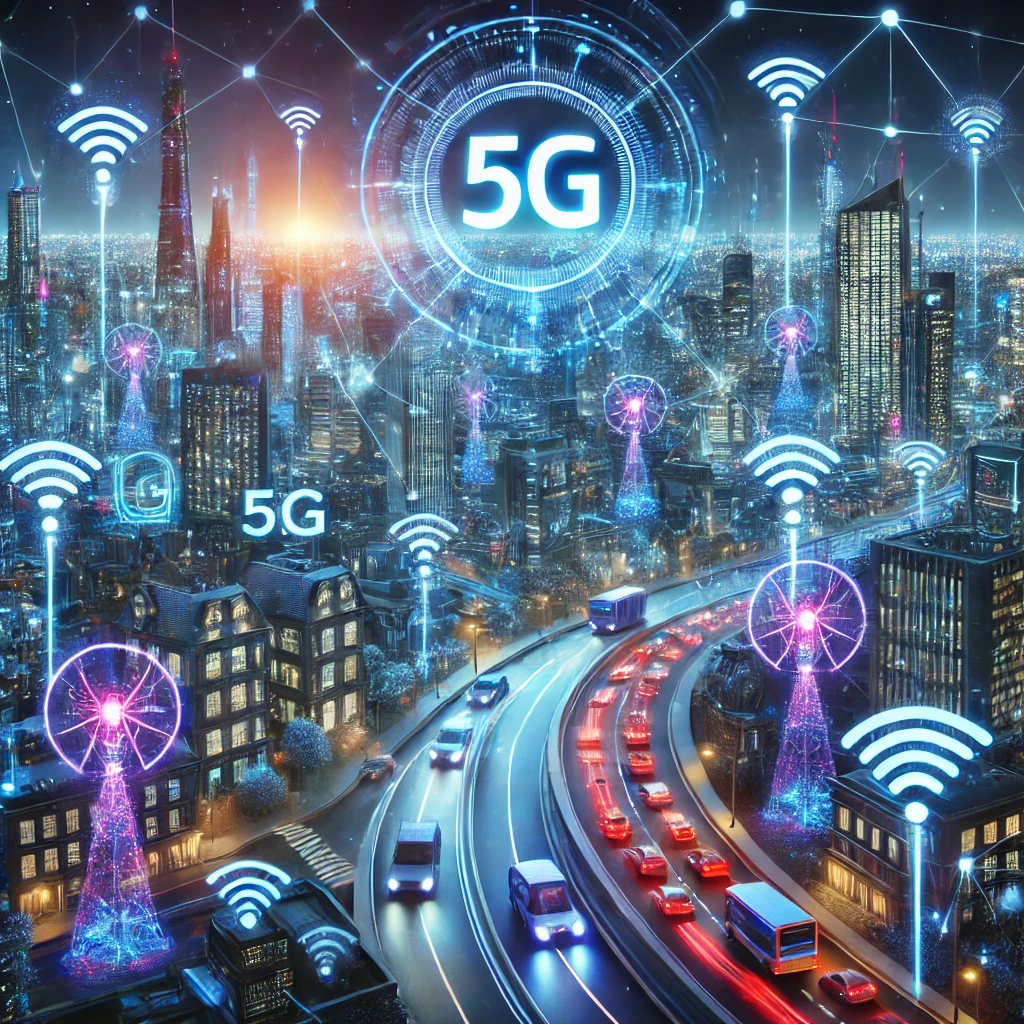
Introduction
The rapid evolution of wireless technology has brought us to the era of 5G, a breakthrough in connectivity that is reshaping how we interact with the digital world. From ultra-fast internet speeds to low latency communication, 5G is revolutionizing industries, paving the way for smart cities, IoT devices, autonomous vehicles, and more. But what lies beyond 5G? Let’s dive into the advancements and the future of wireless technology.
What is 5G?
5G (fifth-generation) wireless technology is the latest global standard in mobile communications. It offers:
- Blazing Fast Speeds – Up to 10 Gbps, significantly faster than 4G LTE.
- Low Latency – Reducing delay to just 1 millisecond, enhancing real-time communication.
- Massive Connectivity – Supporting millions of connected devices per square kilometer.
- Greater Reliability – Improved performance, even in crowded areas.
How 5G is Transforming Industries
1. Smart Cities and IoT Expansion
5G enables seamless connectivity for billions of IoT devices, supporting smart infrastructure, intelligent traffic management, and energy-efficient buildings. Cities will become more responsive and efficient, reducing congestion and improving public services.
2. Healthcare Revolution
With 5G, remote surgeries, AI-driven diagnostics, and real-time patient monitoring will become the norm. The healthcare industry is set to benefit from faster data transmission and improved telemedicine services.
3. Autonomous Vehicles and Transportation
Self-driving cars depend on ultra-low latency to make split-second decisions. 5G ensures that vehicles communicate instantly with other cars, traffic signals, and infrastructure to create safer roads.
4. Gaming and Augmented Reality (AR/VR)
Gamers and AR/VR users will experience lag-free, high-definition streaming with 5G, making immersive experiences more realistic and widely accessible.
5. Industrial Automation & Manufacturing
Factories are integrating 5G-powered robots and AI-driven automation, boosting efficiency, predictive maintenance, and remote monitoring.
Beyond 5G: What’s Next?
While 5G is just beginning to roll out globally, researchers are already working on 6G, expected to debut around 2030. Here’s what to expect:
- Terahertz (THz) Communications – Speeds 100 times faster than 5G.
- AI-Driven Networks – Smarter, self-optimizing networks.
- Holographic Communication – Real-time 3D holograms for meetings and entertainment.
- Quantum Internet – Secure, ultra-fast data transmission powered by quantum mechanics.
Challenges and Limitations of 5G
Despite its promise, 5G adoption faces challenges:
- Infrastructure Costs – Deploying 5G towers requires significant investment.
- Device Compatibility – Not all current smartphones support 5G.
- Security Risks – With more connected devices, cybersecurity threats increase.
Conclusion
5G is setting the stage for a hyperconnected world, revolutionizing industries and enhancing everyday experiences. As technology progresses, 6G and beyond will further redefine how we communicate and interact. Businesses and individuals must stay ahead by adopting and adapting to these innovations.